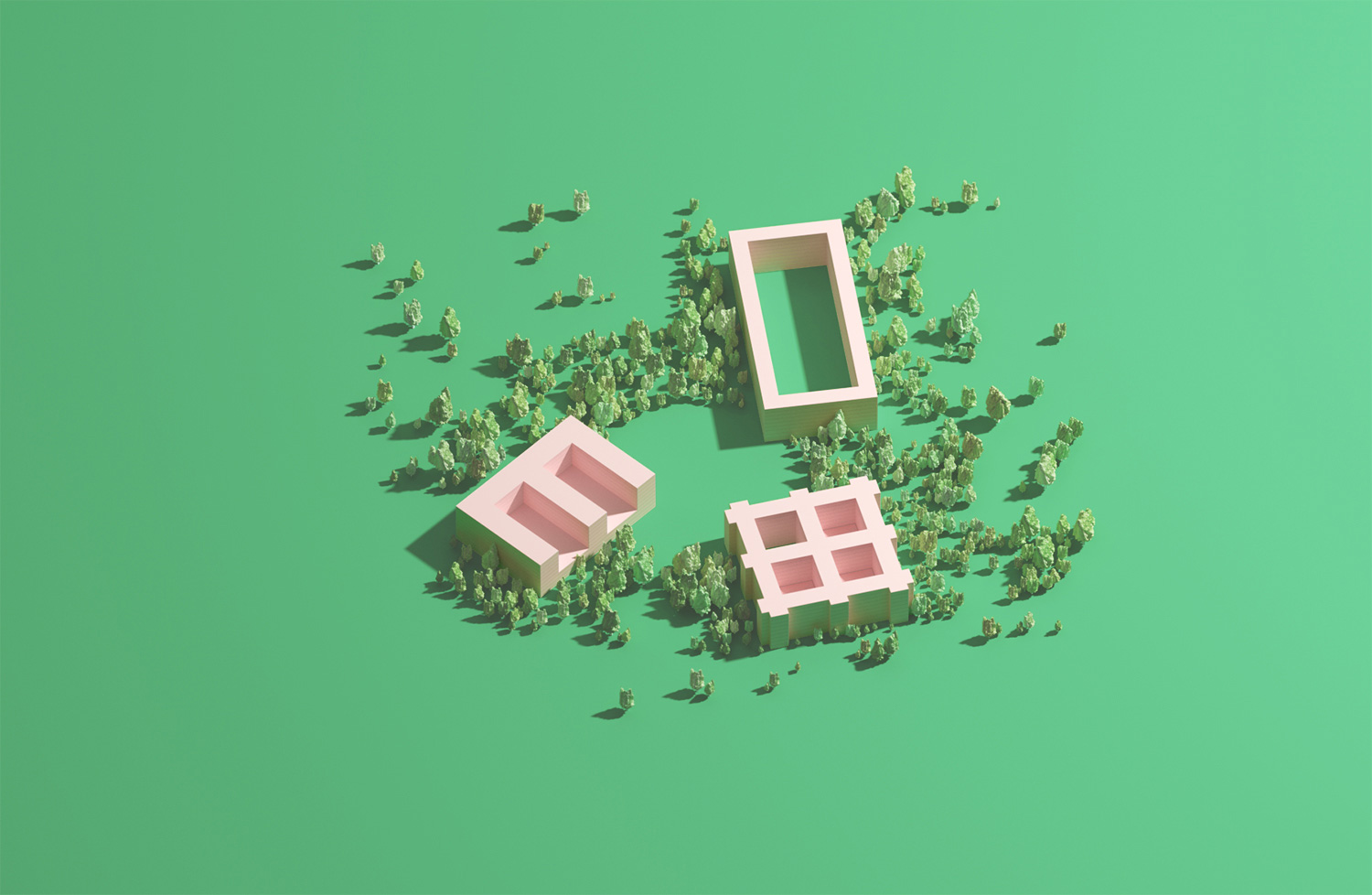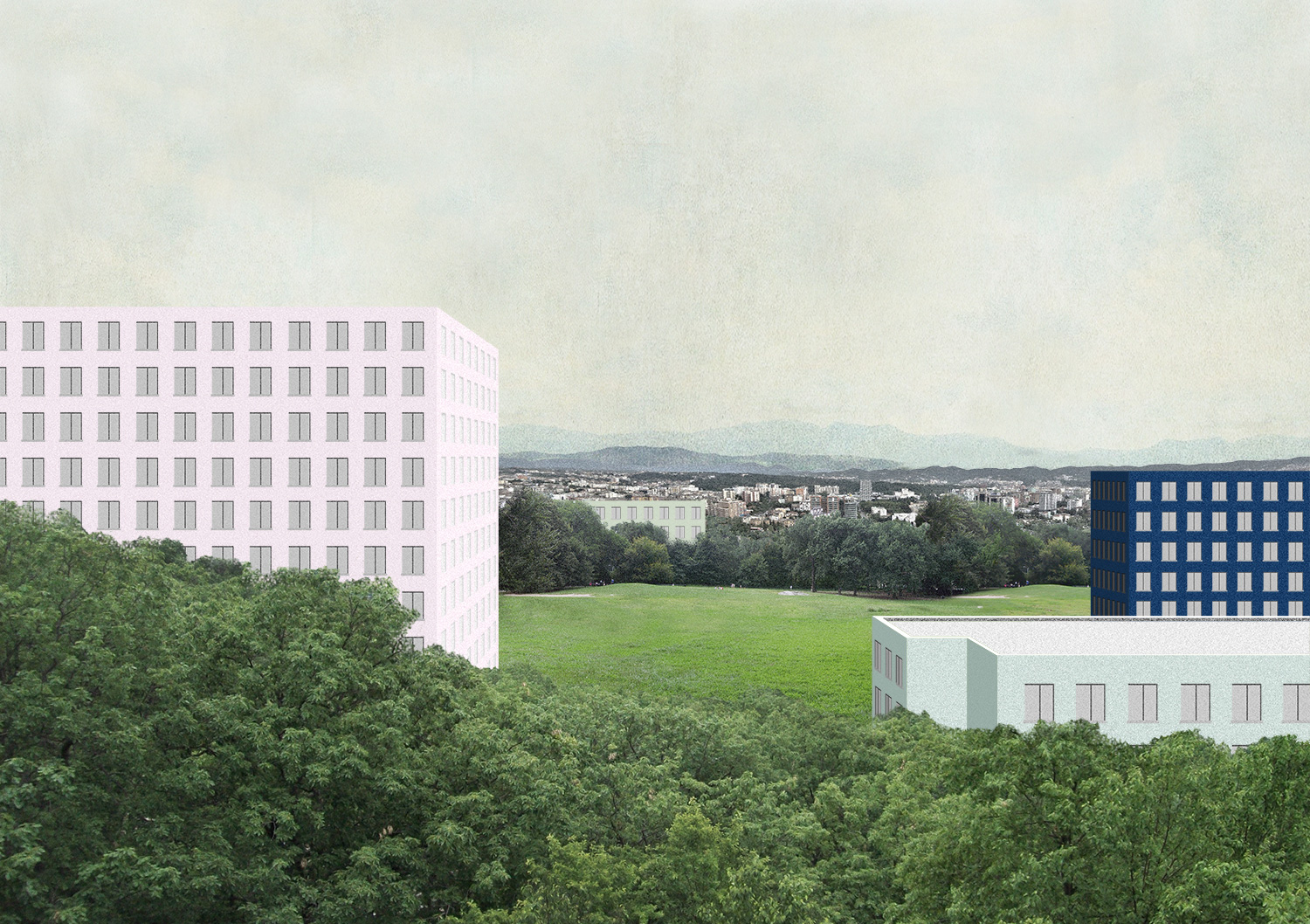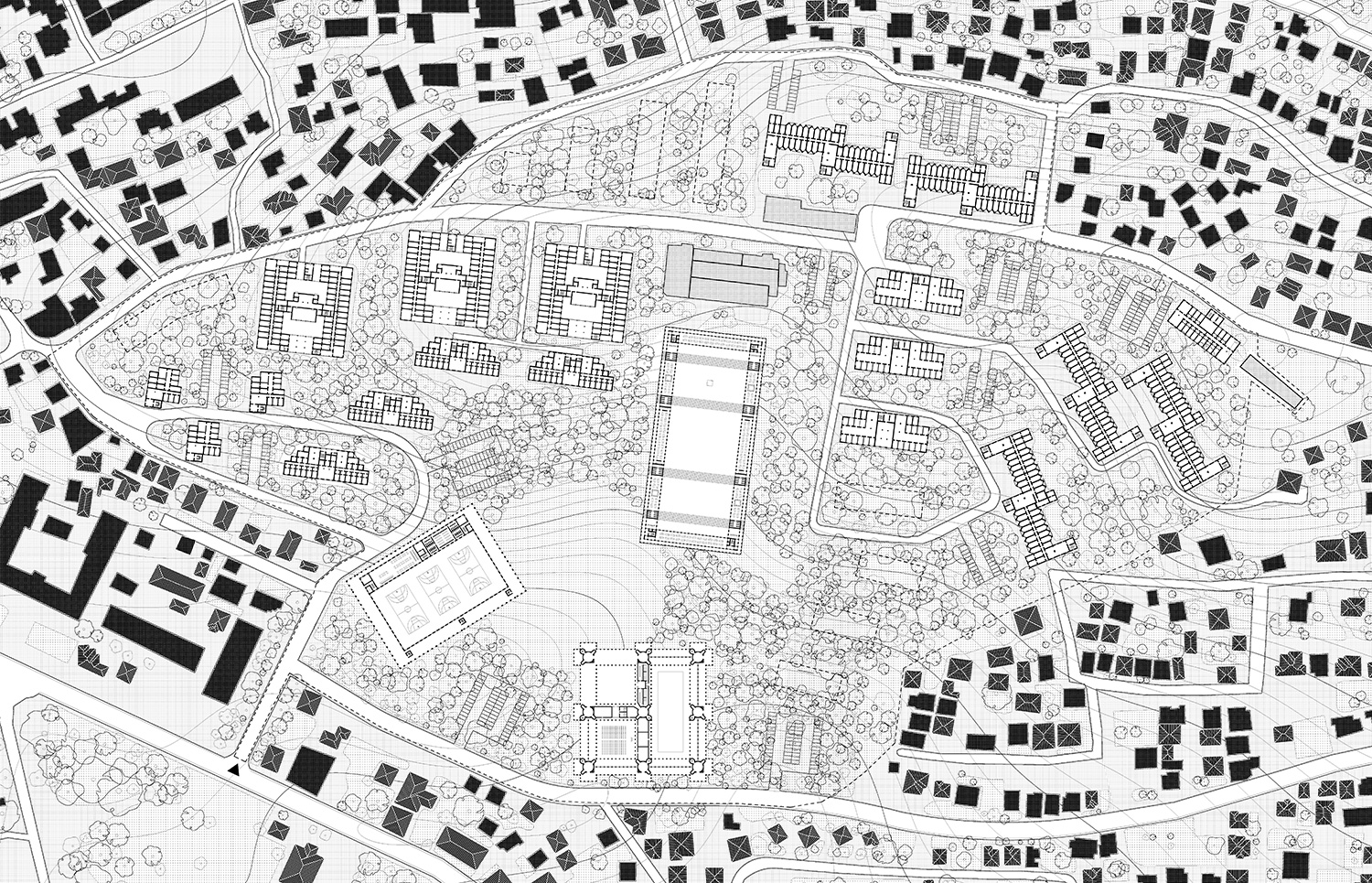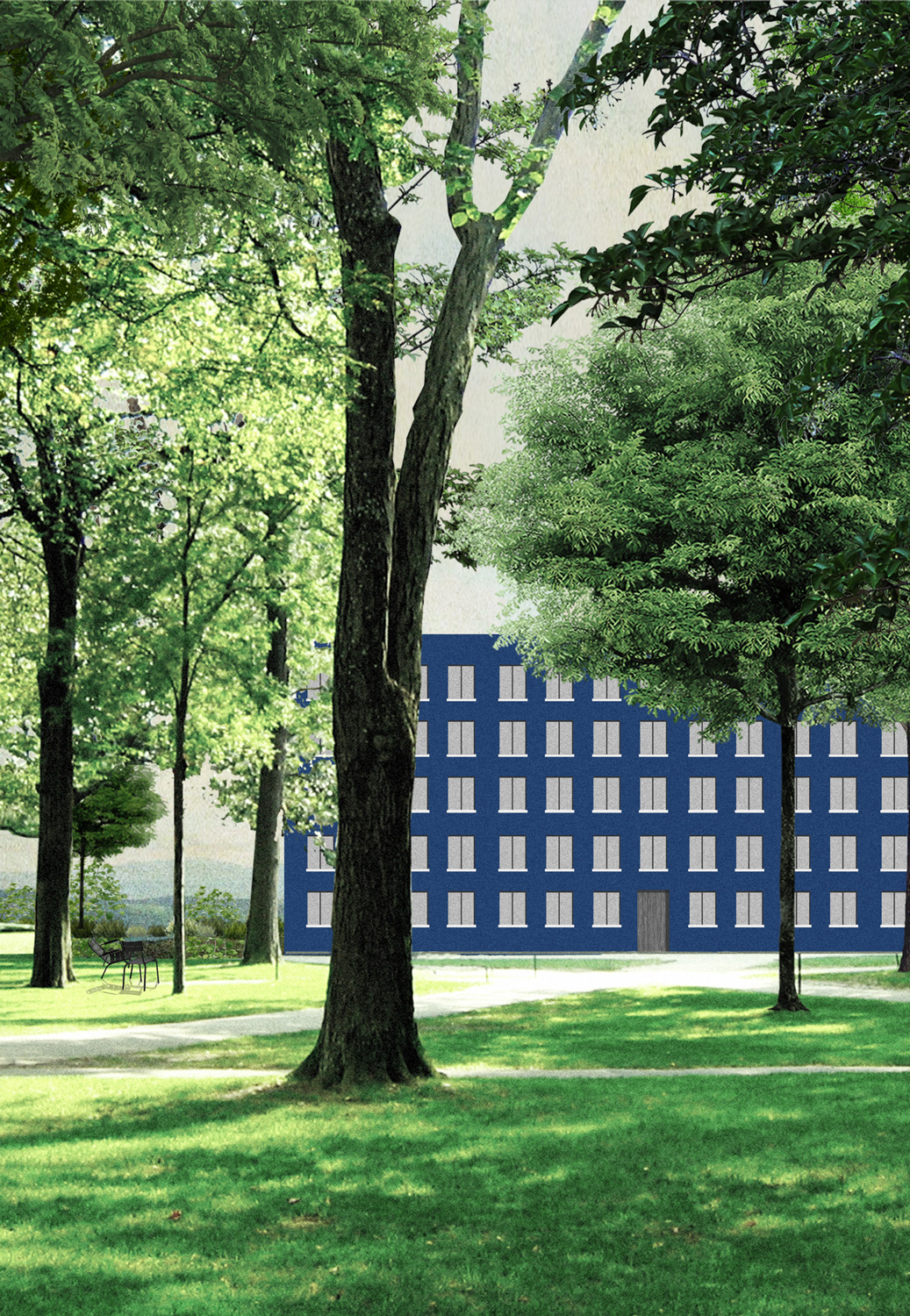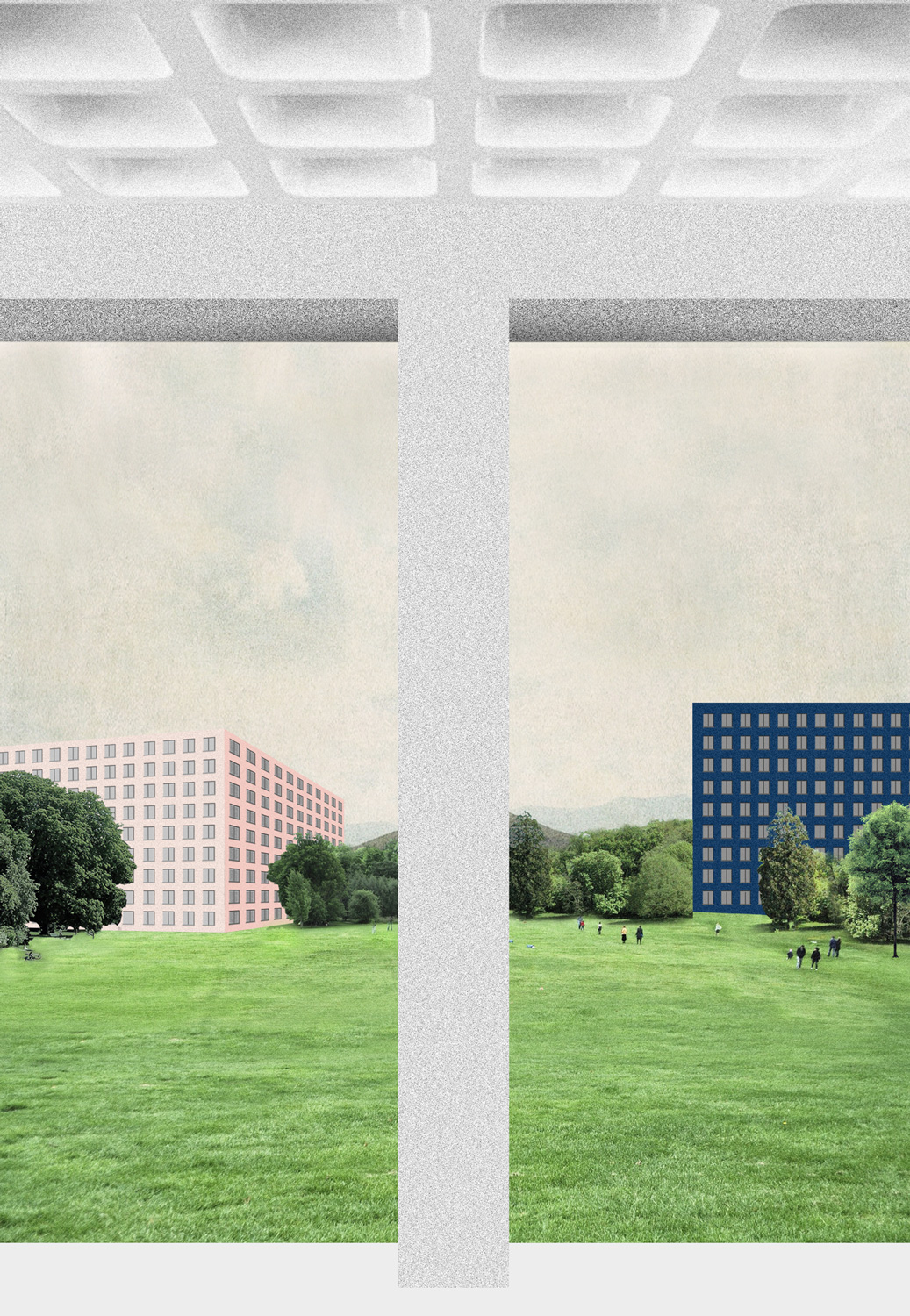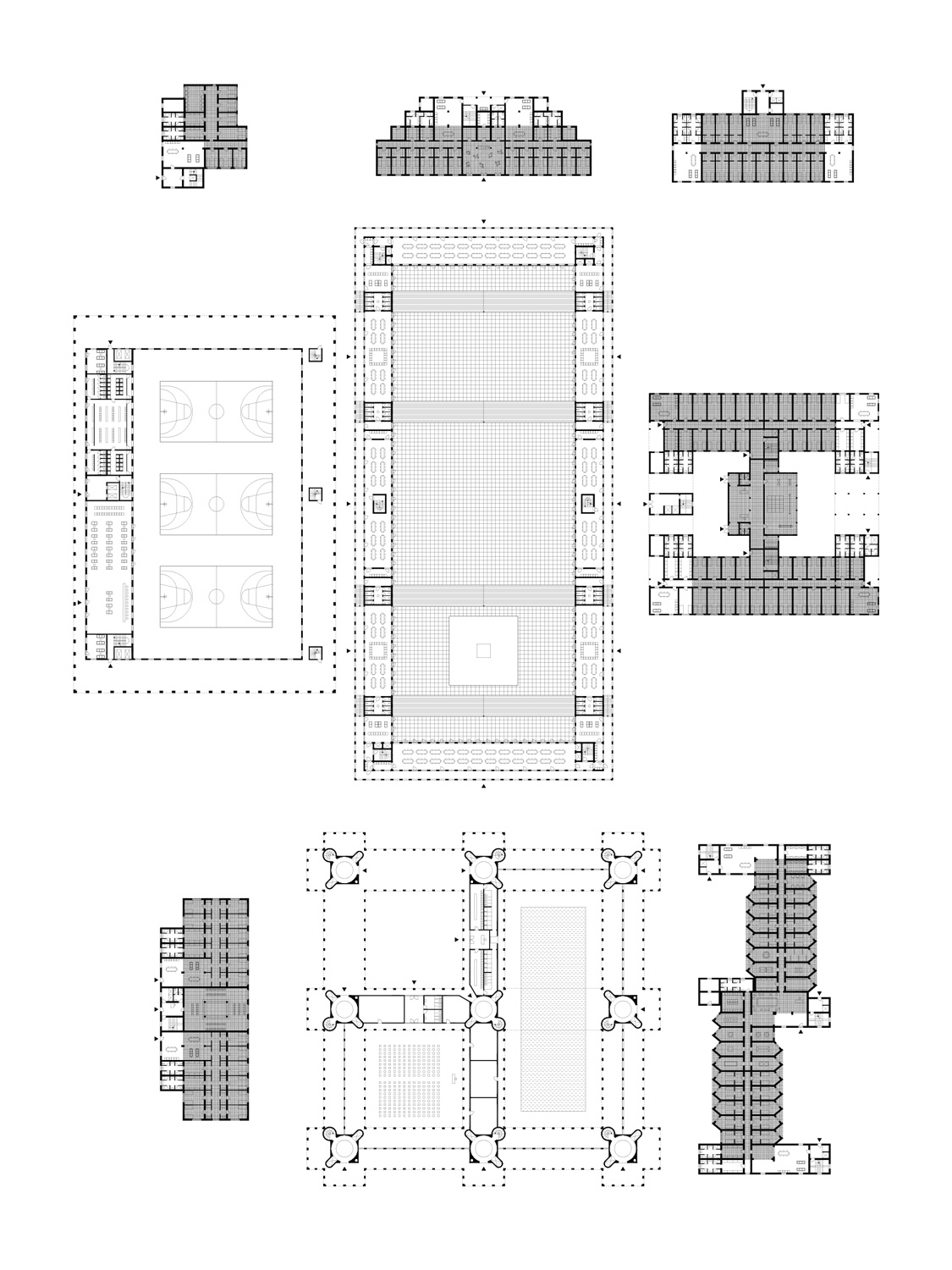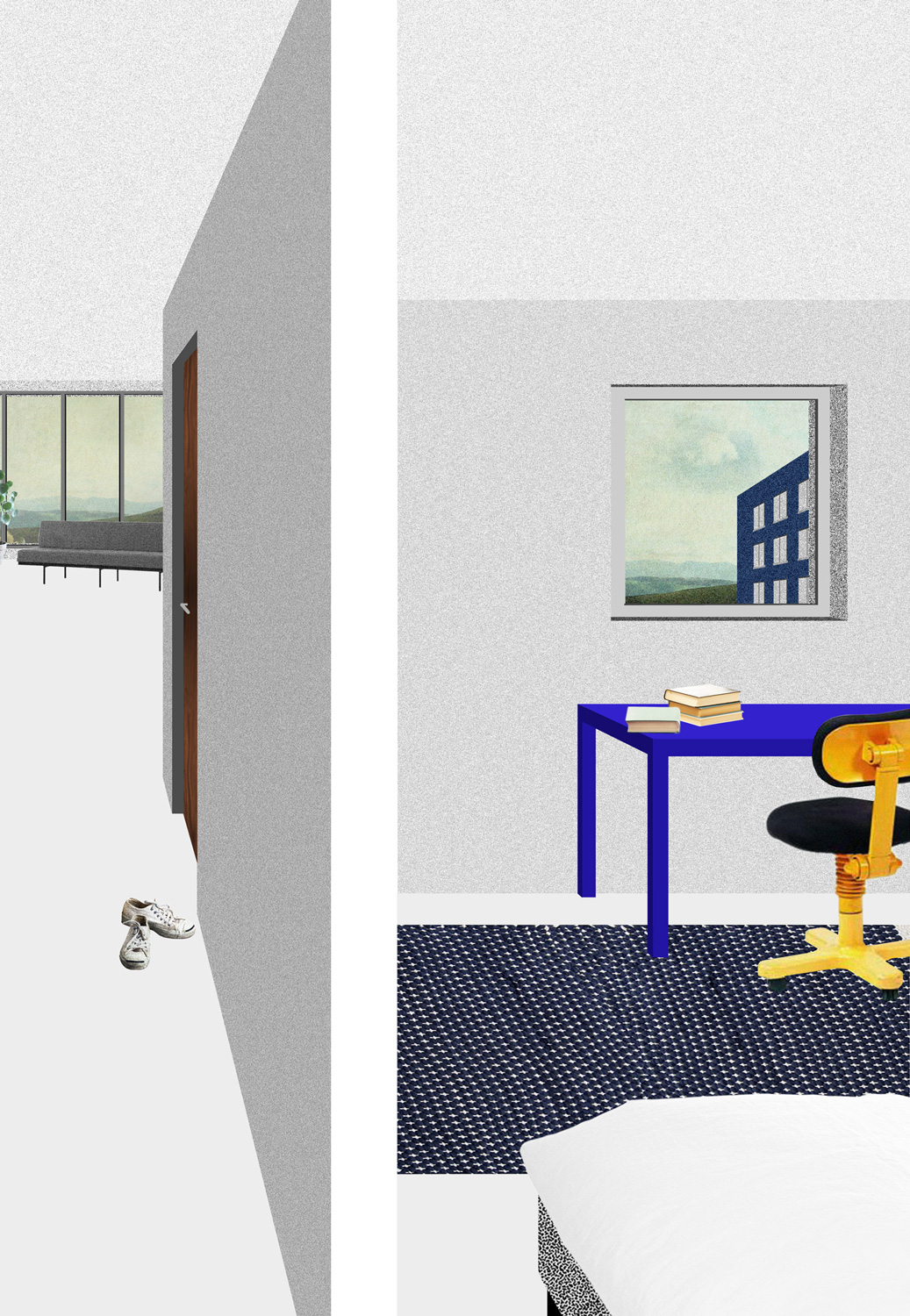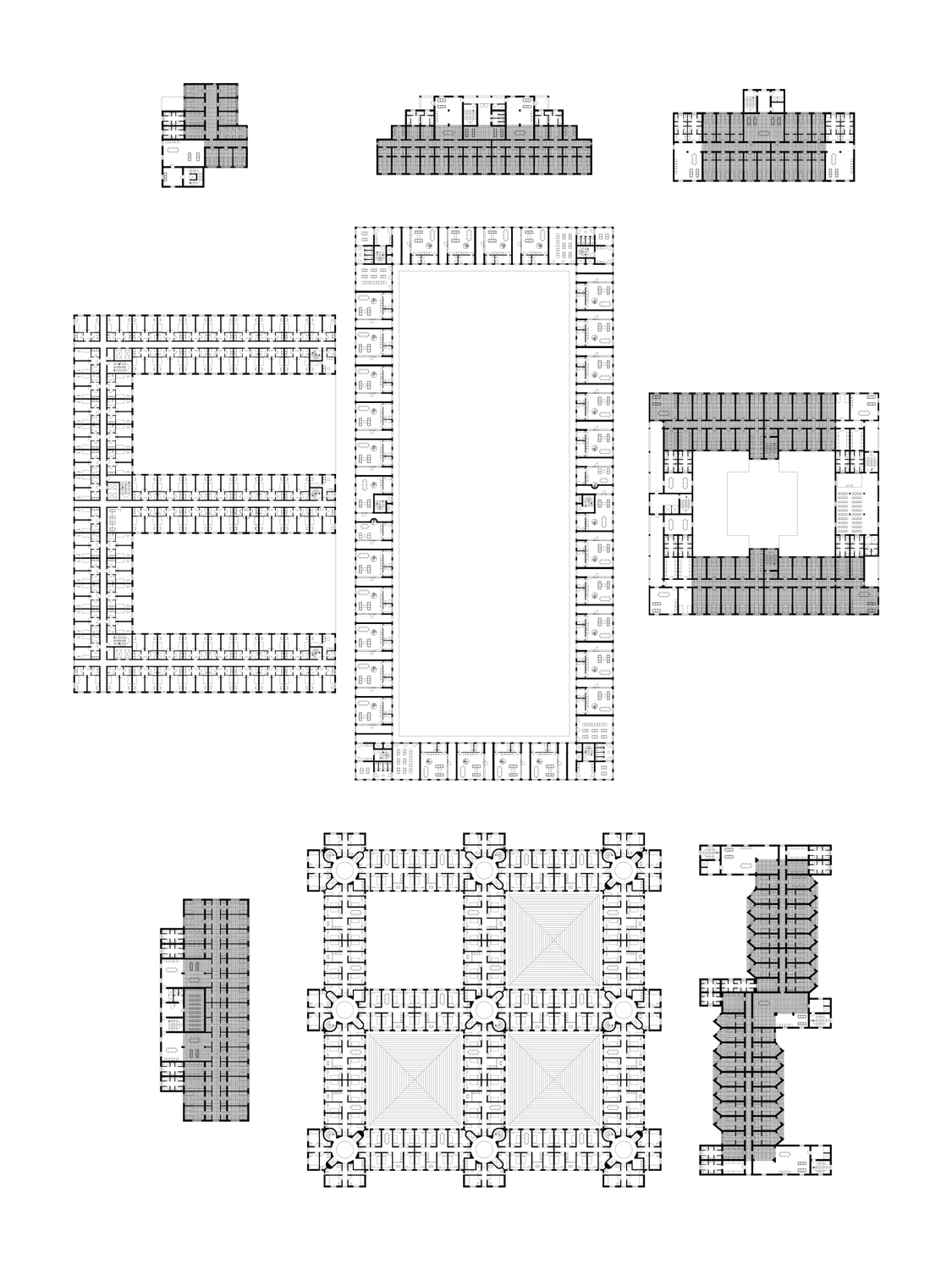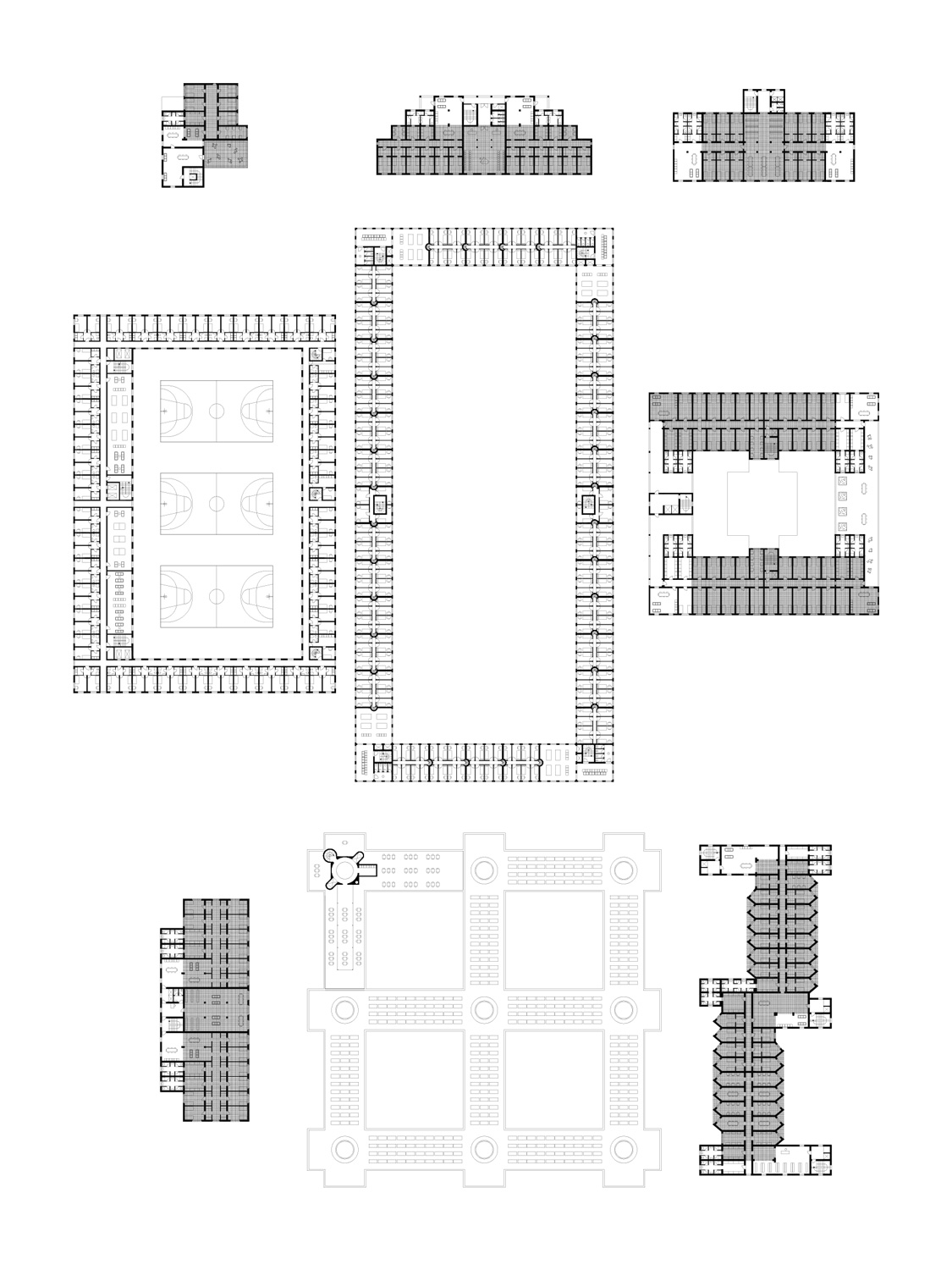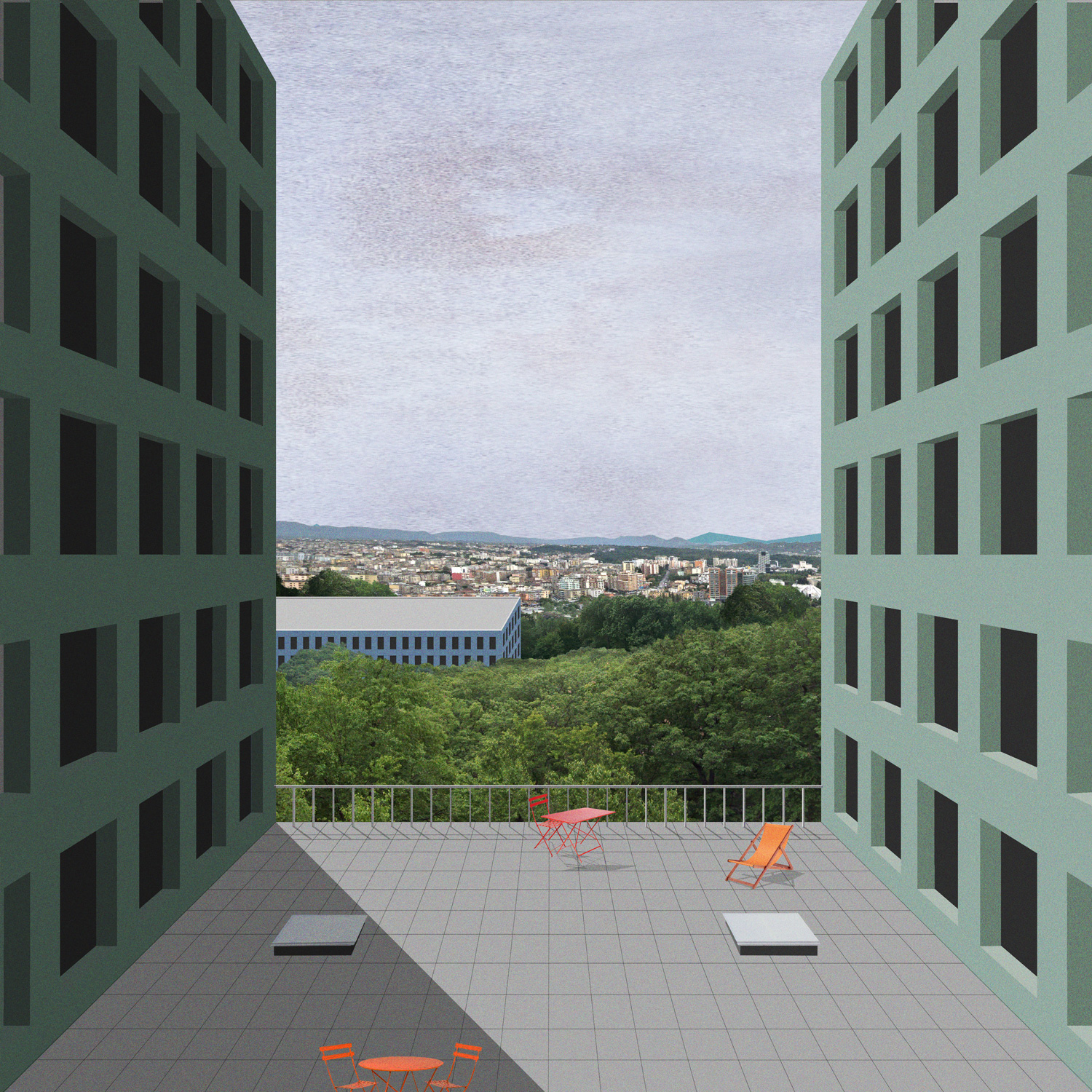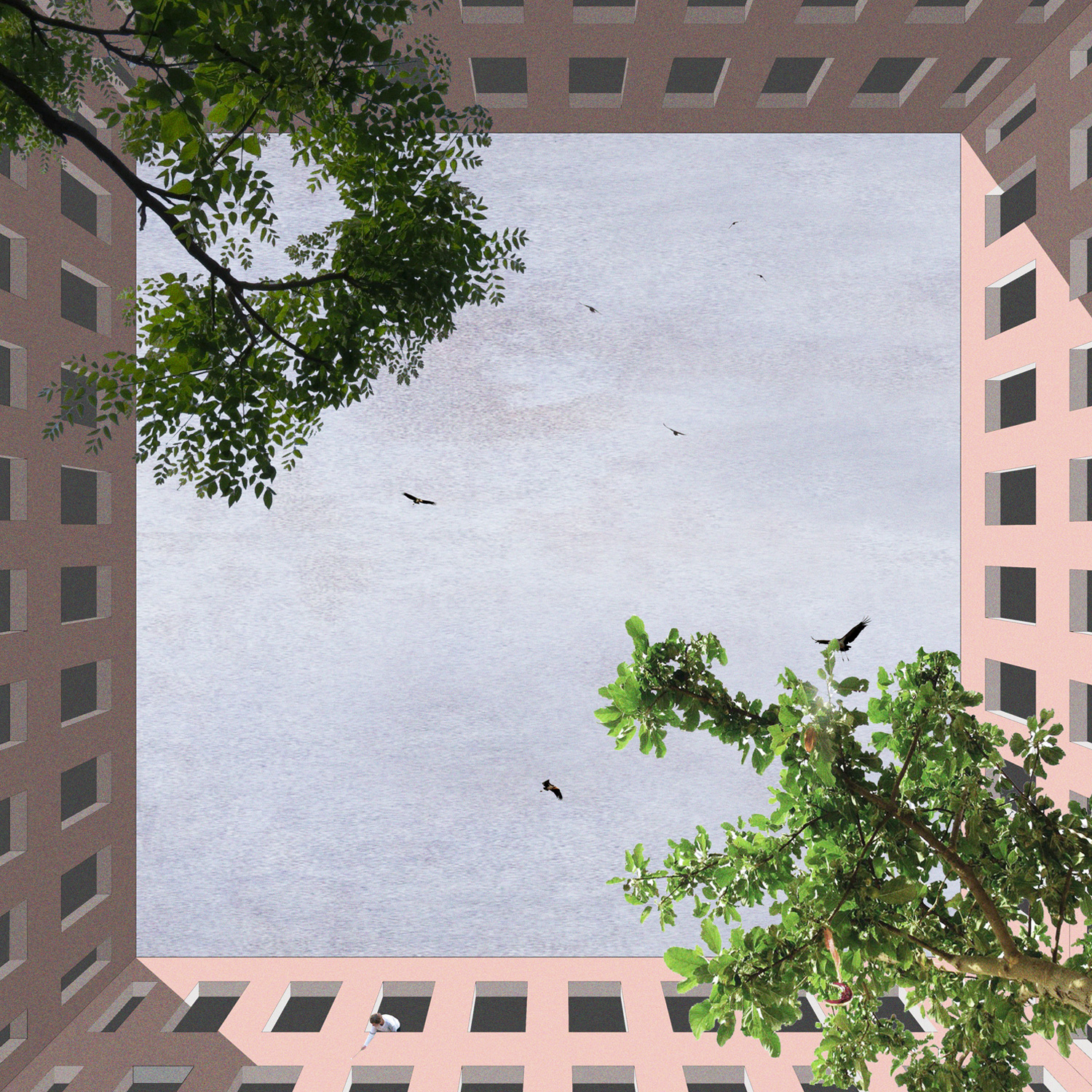☉ Student city Tirana is a selected competition entry by UHO Building Building and Elias Guenoun Architecture developed in 2015. It is located in Tirana Albania in a park setting. Its scale is large.
To describe the actual condition of the City of Students is not an easy task. Different layers seem to have been superimposed one upon another without any long-term planning. It is the result of a 40-year process of heterogeneous urbanization; the result is a chaotic and dysfunctional fabric. Aside planned groups of residential and collective buildings, illegal private constructions occupy more than 25% of the total surface of the site. And none of these structures seem to provide the conditions for a sustainable development.
But if we are forced to admit that the whole needs to be reshaped, it is also impossible to completely ignore the existing situation : this would imply a tabula rasa and a build up from scratch.
It is without any form of romanticized view concerning the territory and its « natural » aspect, nor with a sincere interest for the current buildings, that we do believe that proceeding in this manner would be a mistake. Rather than producing an autonomous object, a new city within the city, we propose a project able to manage the inherent complexity of the whole site by extending its logic in order to fulfill the new expectations of the most important campus of Albania. Rather than to submit a new Masterplan, a new formal layer upon the previous ones, we would like to propose a long term process, open to the volatility of the urban structures. Realism is understood here as a means to accept the irreducible complex condition of the city. Realism as a detached statement.
Phase I
The first phase of our project will be dedicated to the renovation of the existing buildings. After a close look at these buildings, it appears that there is an urgent need to renovate them by readapting their internal organization according to their structural capacity. This renovation should then take into account that these structures are for the part not able to support every expectation of a modern student residence. But as mentioned above, we do not want to simply ignore this existing condition by suggesting their demolition. Our proposition rather tries to absorb contemporary housing needs and to transform the existing buildings to meet them.
We worked in two complementary directions: at a programmatic level and at a construction level. We decided to remodel the organization of living areas inside these buildings in order to avoid the strict dormitory function. By reducing the number of students per room, from 3 to 2 in some cases, by dividing buildings into collective apartments where 10 to 16 students could live together, sharing collective spaces, and by placing public facilities open to every student of the Campus inside the buildings, we totally reversed their function and opened them to a wider use.
At the construction level, we propose to extend each of these buildings with a new and simple construction that can host modern technical facilities and fulfill European standards in terms of comfort and security. This should solve all the visible complications in the existing buildings today.
Similar to the way we propose to renovate the buildings, we also would like to submit the idea of renovating the existing landscape by reinforcing its limits. A first belt of trees would be planted on the periphery of the site during Phase I.
Phase II
Possibly overlapping with the renovation period, a second phase will be initiated by the construction of three new buildings that will allow to significantly expand the capacity of the actual campus. These buildings, designed as a series of large-scale elements, will reaffirm the presence of the campus in the city of Tirana.
They have been designed in order to provide different typologies adapted to a large numbers of students. These buildings will also host the new large-scale collective facilities such as sports areas, food courts, and a library.
With the construction of these three new buildings, the landscape will be deeply transformed by the planting of a meadow surrounded by a dense concentration of trees. This new landscape will allow the whole site to reclaim its centrality and to introduce different shades in the use by its residents. While the wooded area suggests intimacy and anonymity, the meadow is an invitation to gathering and collective expression.
Phase III
The third phase of our project will allow for the City of Students to achieve its ambition of housing 10,000 students with all the necessary requirements. By extending its actual used surface to its legal surface through recovery of the land illegally occupied today, it will be possible to build new constructions and to extend the new landscape into these reclaimed territories.
